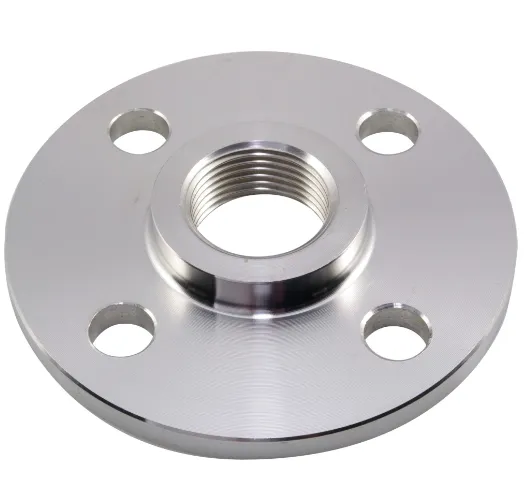-
Cangzhou Yulong Steel Co., Ltd.
-
Phone:
+86 13303177267 -
Email:
admin@ylsteelfittings.com
- English
- Arabic
- Italian
- Spanish
- Portuguese
- German
- kazakh
- Persian
- Greek
- French
- Russian
- Polish
- Thai
- Indonesian
- Vietnamese
- Zulu
- Korean
- Uzbek
- Hindi
- Serbian
- Malay
- Ukrainian
- Gujarati
- Haitian Creole
- hausa
- hawaiian
- Hebrew
- Miao
- Hungarian
- Icelandic
- igbo
- irish
- Japanese
- Javanese
- Kannada
- Khmer
- Rwandese
- Afrikaans
- Albanian
- Amharic
- Armenian
- Azerbaijani
- Basque
- Belarusian
- Bengali
- Bosnian
- Bulgarian
- Catalan
- Cebuano
- China
- China (Taiwan)
- Corsican
- Croatian
- Czech
- Danish
- Esperanto
- Estonian
- Finnish
- Frisian
- Galician
- Georgian
- Kurdish
- Kyrgyz
- Lao
- Latin
- Latvian
- Lithuanian
- Luxembourgish
- Macedonian
- Malgashi
- Malayalam
- Maltese
- Maori
- Marathi
- Mongolian
- Myanmar
- Nepali
- Norwegian
- Norwegian
- Occitan
- Pashto
- Dutch
- Punjabi
- Romanian
- Samoan
- Scottish Gaelic
- Sesotho
- Shona
- Sindhi
- Sinhala
- Slovak
- Slovenian
- Somali
- Sundanese
- Swahili
- Swedish
- Tagalog
- Tajik
- Tamil
- Tatar
- Telugu
- Turkish
- Turkmen
- Urdu
- Uighur
- Welsh
- Bantu
- Yiddish
- Yoruba

Oct . 07, 2024 13:36 Back to list
din flange pn16
Understanding DIN Flanges Focus on PN16
In the realm of mechanical engineering and piping systems, flanges play a crucial role in connecting two sections of pipe or other equipment. They provide a reliable and secure means of joining components, enabling seamless transport of fluids and gases. Among the numerous standards for flanges, DIN (Deutsches Institut für Normung) flanges have become a cornerstone in Europe and beyond. This article delves into the specifics of DIN flanges, with a special focus on the PN16 classification.
What is a DIN Flange?
DIN flanges conform to the standards set forth by the Deutsches Institut für Normung, which outlines specifications for pipe connections, including dimensions, materials, and pressure ratings. These flanges are widely recognized for their high quality and interoperability, especially within European markets. DIN flanges come in various types, including slip-on, weld neck, blind, and threaded, each designed to cater to specific application needs.
The Importance of PN Ratings
The PN in PN16 stands for Pneumatik Nenn (Nominal Pressure in German), representing the pressure rating of the flange. The PN rating system indicates the maximum permissible pressure at a given temperature and is expressed in bar. For instance, a PN16 rating signifies that the flange can handle pressures up to 16 bar, which is approximately 232 psi.
This rating is essential for safe operation in various industries, including water supply, wastewater management, and chemical processing. Understanding these ratings helps engineers choose the right components, minimizing the risk of system failure due to pressure surges.
Dimensions and Specifications
DIN flanges are available in various sizes, and those classified as PN16 adhere to specific dimensional standards. The flanges typically feature standard bolt holes arranged in a circular pattern, allowing for easy connection to other components. According to DIN 2576 and DIN 2631, the dimensions of a PN16 flange vary depending on the nominal diameter (DN)
- DN40 Outer diameter of 150 mm, bolt circle diameter of 125 mm, bolt hole diameter of 12 mm, and 4 bolts. - DN100 Outer diameter of 260 mm, bolt circle diameter of 220 mm, bolt hole diameter of 16 mm, and 8 bolts. - DN500 Outer diameter of 600 mm, bolt circle diameter of 550 mm, bolt hole diameter of 20 mm, and 12 bolts.
din flange pn16

These specifications ensure compatibility with standard piping systems while allowing for different configurations necessary for unique applications.
Material Considerations
DIN flanges can be manufactured from various materials, including carbon steel, stainless steel, and ductile iron. The choice of material often depends on the medium being transported and the environmental conditions of the application. For example, stainless steel flanges are preferred for corrosive environments, while carbon steel flanges may be adequate for non-corrosive applications.
Moreover, ensuring that the material complies with standards such as EN 10222 is crucial for performance and safety. It is also essential to consider the flange's surface finish, as this can impact the sealing and overall durability of the connection.
Application Fields
PN16 DIN flanges find application across numerous sectors
1. Water Supply Systems They are often used in pipelines transporting potable water due to their strength and reliability. 2. Environment and Waste Management These flanges are essential in sewage systems and wastewater treatment facilities, where durability under varying pressures is crucial.
3. Chemical Industries In chemical processing, flanges must tolerate various substances, and properly selected materials (like stainless steel) ensure safety and integrity.
Conclusion
In summary, DIN flanges, particularly those rated PN16, represent a vital component in ensuring the effective and safe transport of fluids and gases in various industries. Their standardized dimensions, pressure ratings, and material versatility make them a reliable choice for engineers and project managers alike. Understanding the specifics of DIN flanges can significantly impact the efficiency, safety, and longevity of piping systems, underscoring their importance in modern engineering practices. As industries evolve and demand for robust piping connections grows, DIN flanges will continue to play a crucial role in facilitating these needs.
Latest news
-
ANSI 150P SS304 SO FLANGE
NewsFeb.14,2025
-
ASTM A333GR6 STEEL PIPE
NewsJan.20,2025
-
ANSI B16.5 WELDING NECK FLANGE
NewsJan.15,2026
-
ANSI B16.5 SLIP-ON FLANGE
NewsApr.19,2024
-
SABS 1123 FLANGE
NewsJan.15,2025
-
DIN86044 PLATE FLANGE
NewsApr.19,2024
-
DIN2527 BLIND FLANGE
NewsApr.12,2024
-
JIS B2311 Butt-Welding Fittings LR/SR 45°/90° /180°Seamless/Weld
NewsApr.23,2024











